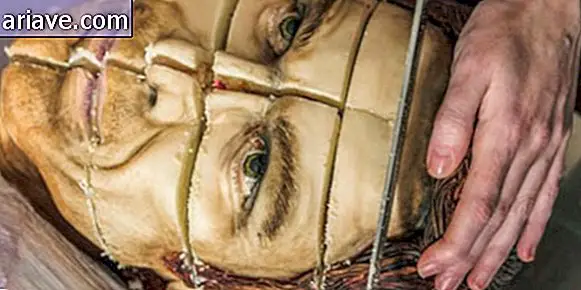5 Recent Discoveries on Millennial Combat Weapons
To fight their battles, at any time, the human being had to use a lot of creativity and create the most different weapons. Archaeologists in research fields - and even normal people - are faced with new findings. Have you ever thought about tripping over an ancient artifact while walking around? If not, start thinking, because that is quite possible.
1. The Saga Sword

In July this year, Saga Veneck, an 8-year-old girl, was swimming in a lake when she found a sword in southern Sweden. His father thought it was just an abnormal stick, so decayed that the piece was. Researchers at the local museum in Jonkopin County found that their discovery could be more than 1, 500 years old and was probably created in the pre- Viking era.
2. The Sword of Buzau

In 2018, a quarry worker in Buzau, Romania, found a sword among the rubble. Made in the Bronze Age, in a mold that created decorations on its surface, it dates back over 3, 000 years. The blade, though millennial, was in good condition. The relic was immediately handed over to the appropriate authorities and would have been one of the most remarkable discoveries made in that region.
3. African bone knife

We are talking about a Stone Age tool in Africa. At that time, bones were used to complement stone utensils. Archaeologists found a specimen near the coast of Morocco in 2012. The piece looked astonishing 90, 000 years! Bone tools were used for more general tasks, or so it was thought before the find. The copy was a specific knife that, unlike the previous ones, was probably used to cut something soft, like leather.
4. Millennial Spearheads

Clovis, a New Mexico City, housed the oldest artifacts in this category — from 13, 000 to 12, 700 years old. However, in 2018, archaeologists found 15, 500-year-old spears in Texas. Experts speculate that the finding may be from US pioneer hunting societies and, moreover, were the first hunting tools other than those found at Clovis.
5. The fragile Vikings swords

Did you know that not every Viking sword was used for fighting? A 2017 study of Danish swords showed that they would be unsuitable for combat. The blades consisted of steel and iron strips folded together - which reduced the impact absorption of the workpiece. In addition, they were soldered at high temperatures, a process that increases oxidation and shortens the service life. Researchers suspect that the relics, in fact, served only as ornaments for the elite.











